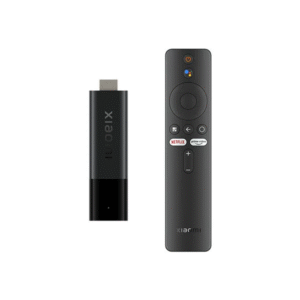Most internet providers love flashy promises. They talk about “blazing fast speeds,” “next-gen connectivity,” and “unlimited entertainment at your fingertips.” But when the dust settles, the real question every household asks is simple: does it actually work when you need it most? That’s where kinetic cable internet comes into focus.
Instead of getting lost in marketing jargon, families want reliability, fair pricing, and performance that doesn’t dip during peak hours. For many, the internet isn’t a luxury anymore—it’s the backbone of daily life. From kids logging into online classes, to parents running businesses from home, to everyone streaming, gaming, and staying connected, your internet provider must deliver more than words.
The hype around Kinetic is that it combines traditional cable reach with upgraded infrastructure to make connectivity more stable in areas where options are slim. But the truth isn’t found in ads; it’s found in whether customers can actually go through a week of work and entertainment without the dreaded “no internet connection” message popping up. In this breakdown, we’ll strip away the marketing layers and look closely at what Kinetic actually delivers—where it shines, where it falls short, and how it stacks up against today’s competitive market.
Why Performance Matters More Than Promises
Speed tests and gigabit claims may sound great, but performance in real life is what makes or breaks an internet provider. If you’re at an important Zoom meeting and your connection drops, those “up to” speed numbers don’t matter. Customers today expect consistency over flashy marketing.
Kinetic’s edge is that it blends the wide reach of cable with newer enhancements that reduce congestion. While cable often gets criticized for slowing down during peak times, Kinetic has worked on upgrading infrastructure to make performance steadier. For many households, that means the ability to stream on multiple devices, play games online, and work from home without sudden interruptions.
But performance isn’t only about speed. Latency—how quickly data moves back and forth—is equally critical for gamers, remote workers, and even students relying on real-time interactions. By focusing on both speed and stability, Kinetic positions itself as more than just another cable provider. The question remains, however: can it consistently deliver at the level customers expect, or does it still fall into the same traps as traditional providers?
The Affordability Question
Internet bills can be tricky. Many providers lure customers in with low intro offers, only to hike the price later. Affordability isn’t about the first three months; it’s about predictable, fair pricing year after year.
Kinetic has tried to position itself as a budget-friendly option, especially for suburban and rural households where choices are limited. While it may not always be the absolute cheapest, the value comes from fewer hidden fees and more transparent billing. For families, knowing exactly what to expect on their monthly statement is often just as important as having a fast connection.
This balance between performance and affordability makes Kinetic attractive to households who are tired of the “intro deal, then price jump” routine. Still, affordability varies depending on region, so it’s worth comparing Kinetic’s long-term pricing against competitors before committing.
Coverage Where Others Don’t Reach
One of Kinetic’s biggest selling points is where it operates. While big players often concentrate their best deals in city centers, many smaller towns and rural communities get overlooked. That’s where Kinetic steps in, filling the gap with coverage where people need it most.
For households outside major urban hubs, choices are often limited to outdated DSL or satellite options that can’t keep up with modern demands. Kinetic brings cable and upgraded connections into these areas, offering a real alternative.
Of course, availability can vary, and in some regions, fiber or premium competitors might still be the better choice. But for families who have been stuck with unreliable internet for years, Kinetic’s presence alone is a game-changer. It’s not just about better speeds—it’s about finally having a dependable option in areas where “dependable” was rarely possible before.
How Kinetic Stacks Up Against Competitors
The internet market is crowded with providers battling for attention, each boasting unique perks. The key to understanding Kinetic’s place is looking beyond slogans and directly comparing it with alternatives.
Big national providers often push bundles with TV and phone, locking customers into contracts that look good at first but get expensive later. Others flaunt gigabit speeds but don’t deliver consistent reliability. Kinetic’s strength is in offering straightforward plans without overwhelming extras, making it appealing for households who just want a strong internet connection.
That said, if you’re in an area where fiber options are available, those may still beat Kinetic in terms of raw performance. But where fiber is out of reach, Kinetic often becomes the most practical choice. It’s less about being the absolute fastest and more about being the provider that actually works when you need it most—a critical edge in the 2025 market.
What Customers Are Saying
Customer reviews are often the best way to separate hype from reality. Many Kinetic users highlight improved reliability compared to older providers in their area. They report smoother streaming, fewer dropped calls, and more dependable connections overall.
Of course, not every review is glowing. Some households mention slower-than-expected speeds in peak hours, or limited plan variety compared to bigger brands. But what stands out is the consistency of feedback around billing transparency and customer support, areas where other providers often struggle.
By focusing on improving the experience where it matters most—steady connectivity and straightforward pricing—Kinetic has earned loyal customers, especially in smaller communities. While no provider is perfect, the general trend suggests that Kinetic delivers on its promise more often than not, making it a trustworthy option in the regions it serves.
The Long-Term Outlook for Kinetic
Looking ahead, the biggest question is whether Kinetic can keep pace with the rapid advances in internet technology. Competitors are rolling out faster fiber networks, and satellite providers are expanding reach. Kinetic will need to keep upgrading its infrastructure to remain competitive.
The good news? Kinetic has already invested heavily in strengthening cable performance and expanding access in underserved areas. If this momentum continues, the provider could position itself as the go-to choice for families who want a dependable connection without unnecessary bundles.
Long-term success will depend on how well they balance affordability with innovation. Customers today expect not only stability but also faster upgrades as technology evolves. If Kinetic can meet both expectations, it may continue to carve a niche in 2025 and beyond.
Conclusion: The Real Value of Kinetic Cable Internet
When it comes to choosing an internet provider, the noise of flashy ads can make the decision harder than it needs to be. At the end of the day, the question is simple: does it deliver?
Kinetic may not always be the cheapest or the fastest, but it offers a balance many households value—steady performance, fewer billing surprises, and availability in regions often overlooked by the big names. For families tired of battling unreliable connections or navigating hidden fees, this makes a real difference.
Comparing Kinetic with competitors shows that while it may not dominate in every category, it consistently provides a reliable middle ground. And in a world where connectivity underpins everything—from remote work to streaming movies—reliability is priceless.
So, if you’re evaluating providers, ask yourself: do you want the flashiest promises, or the provider that quietly works day after day? For many households in 2025, the answer is clear: kinetic cable internet delivers where it matters most.





